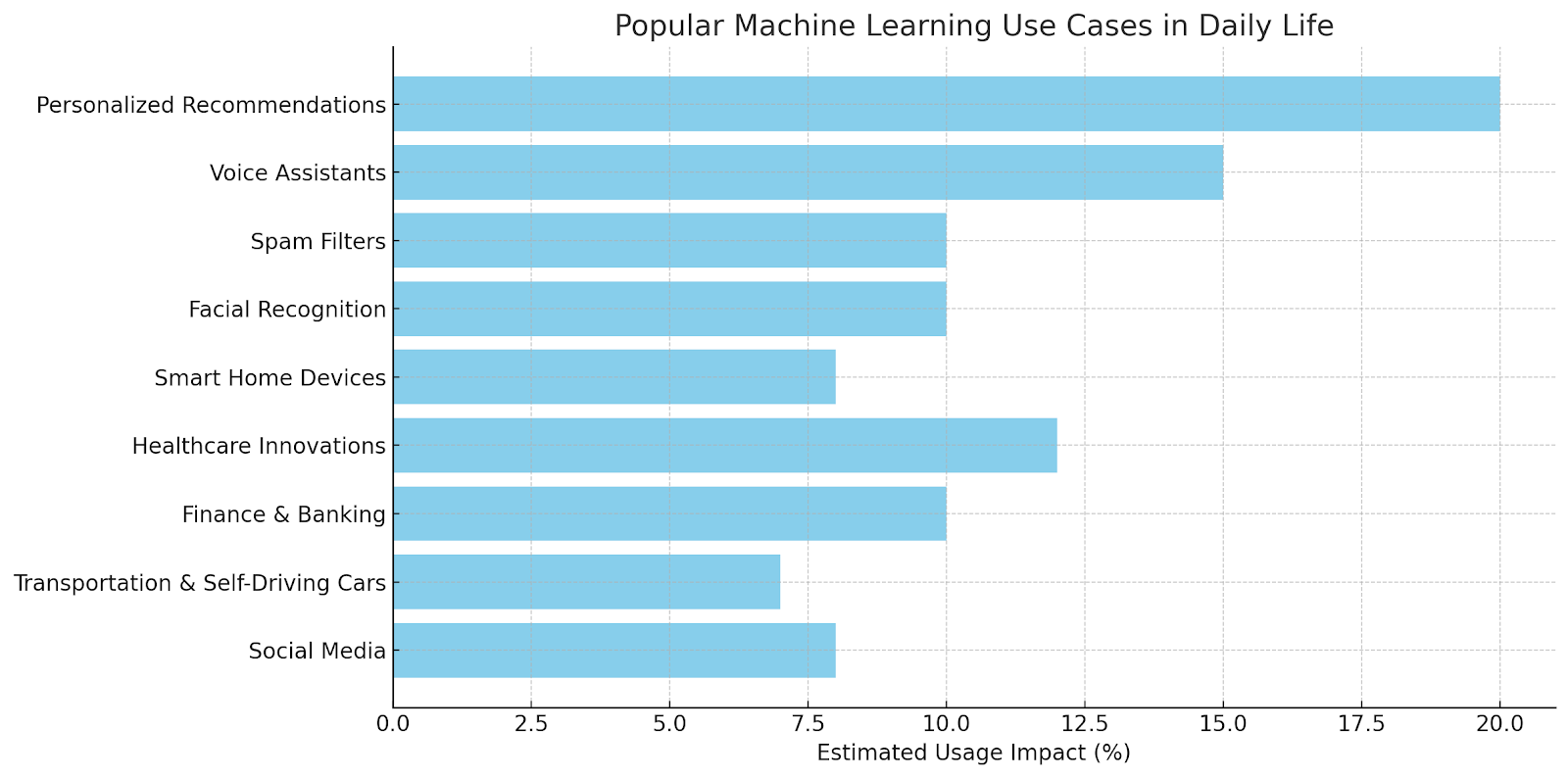How Everyday Life Is Being Changed by Machine Learning
Not only in science fiction, but in our own world, machines are becoming increasingly intelligent. From using your face to unlock your phone to receiving remarkably accurate Netflix recommendations, machine learning (ML) is subtly improving the speed, ease, and personalisation of daily life.

However, what is machine learning?
Machine learning: What is it?
To put it simply, machine learning is a form of artificial intelligence that enables computers to learn from data and enhance their functionality without explicit programming. Machines are given vast amounts of data and use algorithms to find patterns, forecast outcomes, and make decisions rather than being given detailed instructions.
Consider it similar to teaching a child: if you show them enough images of dogs and cats, they will eventually be able to distinguish between the two on their own. ML models perform precisely that, albeit more quickly and with far larger datasets.
Let's now explore the ways in which machine learning permeates our daily existence.

1. Tailored Suggestions (YouTube, Netflix, Amazon)
Have you ever noticed how Netflix seems to know exactly what your preferred genres are? Or how Amazon suggests items that you were unaware you required?
That's machine learning in action.
In order to recommend content or goods that you're likely to like, these platforms examine your past activity—what you've watched, clicked, or purchased—and compare it with that of millions of other users. This increases engagement and sales in addition to improving the user experience.
Fun fact: Netflix's recommendation system is responsible for more than 80% of the content users view.
2. Voice Assistants (Siri, Alexa, Google Assistant)
“Google, what is today’s weather forecast.”
Google, Alexa and Siri are just a few examples of voice assistants. They use natural language processing (NLP) integrated with machine learning to make sense of spoken language. They understand habitual actions and provide relevant responses. The more you use them, the more adaptable they become to your voice and accent.
3. Filtering Spam and Organizing Emails
A great example of the application of machine learning is evident in the smart spam filter in Gmail, which filters out nonsense messages. It learns continuously what spam comprises by examining billions of emails, improving its capabilities to filter out junk and unsolicited messages without blocking the actual emails that the user wants to receive.
The same applies to other features like Smart Reply or Promotions tab, which are also powered by machine learning for better overall inbox email management.
4. Facial Recognition
Using your face to unlock your phone or autoposting pictures on Facebook with friends? That is machine learning skillfully analyzing a person's face and comparing it with his profile data.
Facial recognition technology is also used in bank and other office surveillance systems and during check-in at the airports.
5. Intelligent Home Appliances
Machine learning powers devices like refrigerators that notify you when your groceries are low, lights that turn on as you enter a room, and thermostats that change their settings based on your behavior. These systems adapt to your routines to make your home more cozy and energy-efficient.
6. Innovations in Healthcare
From aiding in diagnosis to forecasting illnesses, machine learning is transforming healthcare. Algorithms can predict the risk of heart disease, analyze medical scans (such as MRIs or X-rays), and even assist in creating individualized treatment regimens.
Real-world example: By examining patient histories and sizable datasets of clinical trials and medical research, IBM's Watson was utilized in hospitals to recommend cancer treatments.
7. Banking and Finance
Banks employ machine learning (ML) to detect fraud by examining transaction patterns to identify anomalous activity. Additionally, it is utilized in algorithmic trading, credit scoring, and even customer service chatbots.
8. Autonomous vehicles and transportation
Automakers like Tesla and Waymo are creating self-driving cars that mainly use machine learning (ML) to sense their surroundings, identify traffic signs, identify pedestrians, and make decisions in real time.
ML is even used by apps like Uber and Google Maps to match drivers and passengers, recommend routes, and estimate travel times.
9. Social Media
Have you ever wondered how Instagram chooses what to display to you first? Or how it seems like TikTok can read your thoughts?
Social media companies use machine learning (ML) to determine your interests and display content that you are likely to interact with. Additionally, it assists in identifying false information, removing offensive material, and suggesting new contacts.
# Here is the graph showing the estimated usage impact of popular machine learning applications in daily life.
Conclusion: Prospects for the Future
Machine learning is already changing how we live, work, and engage with the outside world; it is no longer just a concept for labs and tech companies. ML will only grow more intelligent and pervasive in our daily lives as data becomes more plentiful and computing power rises.
We may soon witness intelligent cities, AI physicians, and highly customized education. This raises significant concerns regarding privacy, ethics, and control even though it promises convenience and innovation.
Machine learning is currently your silent companion, working tirelessly in the background while you watch your favorite show or ask Alexa to play music.
What is your go-to piece of everyday ML-powered technology? Let's discuss it in the comments!



Comments
Post a Comment